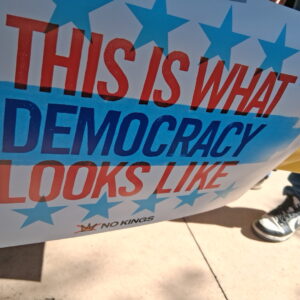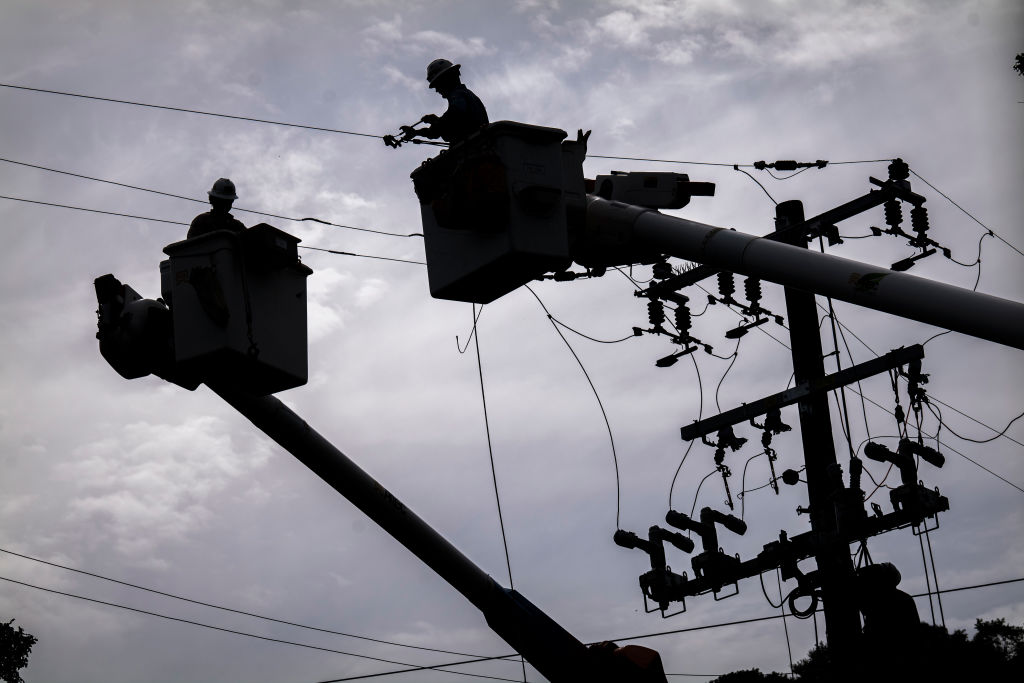
Trump Said Cuts Wouldn’t Affect Public Safety. Then He Fired Hundreds of Workers Who Help Fight Wildfires.
April 7, 2025
Netanyahu is set to meet Trump to talk tariffs and hostages in Gaza
April 7, 2025
Small business owners across the U.S. are crunching numbers how to cover new costs from tariffs on virtually all imports.
Alexander Spatari/Getty Images
hide caption
toggle caption
Alexander Spatari/Getty Images
Many American shop owners are feeling like collateral damage in the global trade war.
Sarah Wells ponders how her 13-year-old business, selling breast-pump backpacks and other items for new moms, will run under President Trump’s new tariffs on all imports.
Just this year alone, her company Sarah Wells Bags has shouldered the cost of two rounds of tariffs, which took effect right as Wells’ shipment from China was en route.
Her large order was loading at the port in February, when the White House raised tariffs on Chinese imports by 10%. By the time it docked stateside in March, tariffs had gone up again, by another 10%. Wells had to shell out an unexpected $15,000 to release her goods from customs.
Now, with the latest round sending total tariffs on Chinese imports to 54% — eating her profit margin — Wells is reeling. She may have to raise prices, but how much before shoppers rebel and stop buying? She plans to retrench: order less, pause hiring, stop developing new products.
“Even if we pass some (cost) to the consumer, we can’t pass it all,” says Wells, based in Virginia. “So I really think the honest answer is that businesses will close.”

Sarah Wells packs and prepares to ship some of her bags and accessories for new moms.
Courtesy of Sarah Wells
hide caption
toggle caption
Courtesy of Sarah Wells
For some, it’s survival mode, which means shrinking selections and freezing hiring
How much or how quickly shoppers might pull back is not clear. The National Retail Federation had forecast retail sales to grow this year — slower than in recent years, though more like they did before the pandemic: between 2.7% and 3.7%.
But the forecast was released before the magnitude of new tariffs became clear — spanning the globe, ranging from 10% to over 50% — and now the trade group says it’s “impossible to predict … the magnitude of change on prices and on consumer spending.”
Giants like Walmart, for example, are now pressuring their foreign suppliers for discounts to offset some of the tariffs. Smaller retailers don’t have that kind of muscle. In surveys, retailers across the board warn they’ll have to raise prices.
And then there’s the scale-back. Like Wells, many business owners are thinking of pulling back: perhaps shrink the store’s selection so there’s less to ship, freeze hiring, pause advertising or developing new products — stop growing and go into survival mode.
“What is the need-to-have versus the nice-to-have … I think right off the bat, that’s where it will start,” says Jessica Bettencourt, who runs Klem’s general store in Massachusetts. Founded by her grandfather 75 years ago, Klem’s sells a wide range of products including hardware, pet food and clothes.
U.S.-made can mean 3 to 4 times the cost
One key argument President Trump makes in favor of tariffs is that they would jump-start American manufacturing, forcing more companies to source their products domestically.
Wells, Bettencourt and many others will say: They’ve tried.
U.S. manufacturers couldn’t tackle the scale of Wells’ orders, she says, when she looked into making or at least assembling her backpacks and purses here. Plus, those manufacturers told her, the raw material would have to come from China anyway.
South Carolina business owner Rozalynn Goodwin ran into a similar challenge.
“We have, for the last eight years, been trying to manufacture in the United States,” says Goodwin. She and her daughter sell double-snap hair barrettes called GaBBY Bows.
“Every manufacturer in the United States we’ve spoken to has told us, ‘You need to continue making this in China. It’s going to cost you three to four times more to make it here,'” Goodwin says. “Our customers will not pay $8 or $10 more for this product.”
The case of $400 work boots
For many common items — clothes, shoes, toys, electronics — the U.S. has not manufactured them at scale in ages, if ever. Smaller-scale operations are much costlier, often double or triple the price of overseas options, and typically require imported supplies anyway, as Wells had discovered.
Bettencourt says, consider work boots. Her store does carry American-made boots, and they’re $400 a pair. Imported alternatives sell for half that amount.
“Not everyone can buy a $400 pair of work boots,” she says. “So I do want to always look at that U.S.-made product first, but I also have to offer my customers what they can afford.”
As another shopkeeper put it: Small-business owners like to make their own decisions and feel like they can live and die by them; the sweeping blanket tariffs are taking that ability out of their control.
Great Job Alina Selyukh & the Team @ NPR Topics: Home Page Top Stories Source link for sharing this story.





















